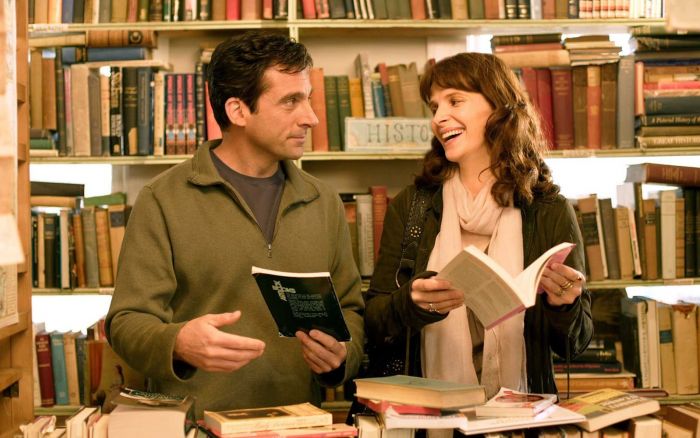Ken Morefield Reviews Dan in Real Life (Plus Some Thoughts of My Own)

I’m a big fan of Peter Hedges’ Pieces of April — it’s the perfect blend of quirky indie charm and real emotional heart — and so I was fairly intrigued when his latest, Dan in Real Life, popped up on the radar. The trailer looked promising and it starred John Mahoney (for whom I have a great fondness following Frasier) and the always luminous Juliette Binoche. Oh yeah, and Steve Carell.
Renae and I finally sat down and watched it a week ago or so, and we both thought it was alright. Not nearly as enjoyable or affecting as Pieces of April, but it seemed to have its heart in the right, albeit ultra-sappy, place. But the more I thought about the movie, especially its last act, the more I found myself disliking it. And Ken Morefield’s review, er, rant sums up why quite nicely:
Dan in Real Life is one of those Three’s Company/sitcom style comedies in which people get themselves into bigger and bigger complications trying to cover up something that wouldn’t be half the problem their secrecy was if they simply were honest and rational for any thirty second segment of the film.
It is the type of film in which a woman will strip and get into a shower where she knows a guy is hiding because she is too embarrassed to admit he was in the bathroom talking to her while she was washing her face and too stupid to tell the person who asks to talk to her to wait for her in the other room and she’ll be out in a few minutes.
It is the type of film in which characters spend days of screen time (what seems like years of our life time) lying to or avoiding honest conversations with people they love so much because they love them so much and are afraid the truth might hurt them a little bit.
And his observations of the film’s “reconciliation” between Steven Carrell’s and Dane Cook’s characters is spot on. Truth be told, I found this to be the most egregious of the film’s missteps — or to put it more bluntly, the part of the film that really pissed me off. As Morefield puts it:
I think the part of Dan in Real Life I liked the least was Dan’s resolution with his brother who first hits Dan and then interrupts Dan’s attempts at apology to rush out the door and get in a car with a hotter, younger chick who was trying to pick up Dan at a bar earlier in the film. What, exactly, is the point of the scene? Turnabout is fair play? The brother landed on his feet or wasn’t really that into the girl to begin with? No reading of this scene is consistent with what the character and the film has told us is true to that point about the brother’s feelings for his girlfriend, but, I’m hard pressed to see how any scene that tried to honestly deal with the fallout of the discovery could be resolved in 30 seconds or less so that we can get on with the happy ending.
I’m not a huge Dane Cook fan, but his Mitch Burns was by far the film’s most enjoyable character, and in some ways it’s most sympathetic: a guy who, it’s implied throughout the film, has always been something of a screw up but is now finally trying to do something right with an honest, loving relationship.
But Dan in Real Life sees fit to repay such behavior by screwing him over and turning him into a total ass in the final act — a move that, for lack of a better term, is just mean-spirited. And this, in a movie that espouses the need for love, forgiveness, and understanding — all traits needed to survive in a family of any size.
I can’t help but compare the family in Dan in Real Life to the one in Pieces of April. Certainly, the family in Hedges’ previous film was quite a bit more dysfunctional, even on the verge of falling apart. But I believed them. There was truth in their interactions, squabbles, and blow-ups, and as such, there was truth in their moments of redemption and grace, however fleeting those were.
However, I don’t believe in the family in Dan in Real Life. However much fun they might have playing family games of hide-and-seek or taking excursions to the beach or bowling alley, however tight they might be during family talent shows, barely any of it rings true. The Burns are the sort of family that you expect to find living in one of those warmly glowing houses in a Thomas Kinkade painting. They’re idyllic, charming, nostalgic, and winsome — because, really, who doesn’t want a picture-perfect family like that — but with ‘nary an ounce of truth to be found anywhere.